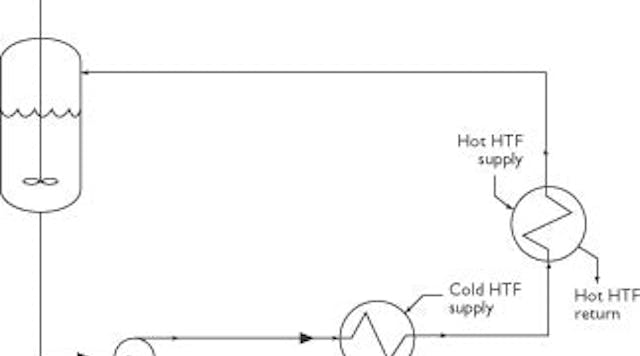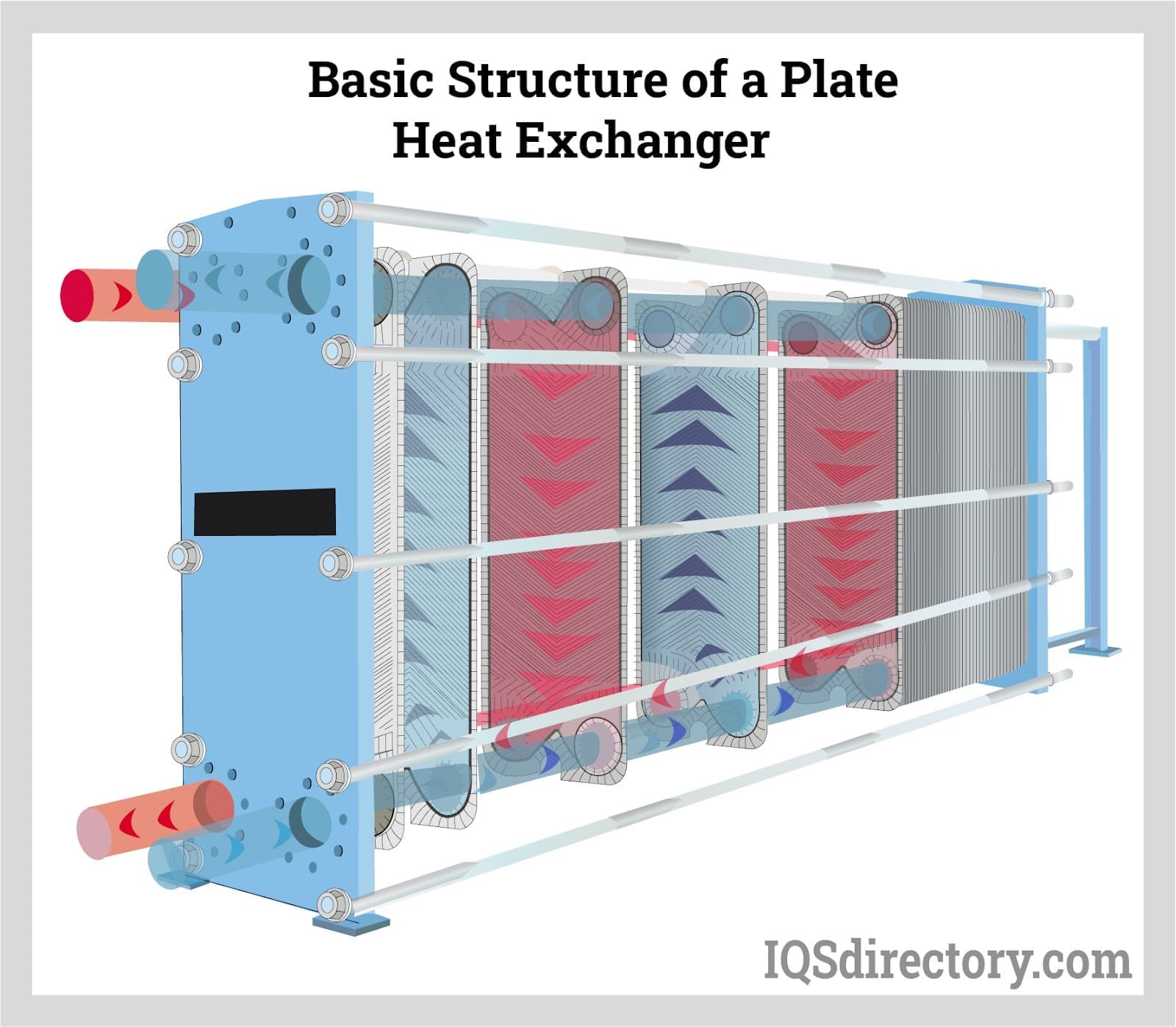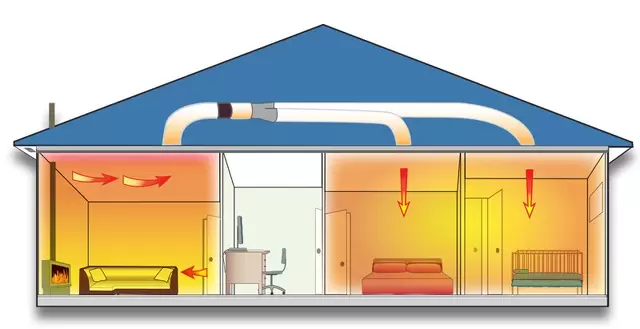Real-Time Monitoring: How DVS Heat Transfer Systems Enable Predictive Maintenance
Advancements in Heat Transfer Systems: What You Need to Know for Optimum Efficiency
Developments in Heat transfer systems are changing performance throughout various sectors. Advanced materials like graphene and nanofluids guarantee substantial improvements in thermal conductivity. Meanwhile, the assimilation of IoT and artificial intelligence provides chances for real-time surveillance and improved energy performance. Nevertheless, the landscape of thermal administration is rapidly progressing (DVS Heat Transfer Systems). Recognizing these advancements is crucial for achieving suitable system efficiency and sustainability in the future. What details developments are forming this transformation?
Emerging Materials for Improved Heat Transfer

Advanced Heat Exchanger Layouts
While traditional Heat exchangers have actually offered their purpose in various applications, progressed designs are currently arising to meet the increasing needs for effectiveness and performance. These innovative designs, such as plate, shell-and-tube, and finned-tube Heat exchangers, include boosted surface areas and boosted flow patterns to raise thermal transfer prices. Additionally, portable layouts enable decreased area needs without endangering performance. Advanced materials, such as composites and corrosion-resistant alloys, in addition improve resilience and performance under severe conditions. Additionally, simulation innovations and computational liquid dynamics are progressively employed to fine-tune these styles, making certain peak Heat transfer qualities. As industries look for to lessen energy intake and take full advantage of output, the adoption of advanced Heat exchanger styles is essential in accomplishing these goals.
The Role of Nanotechnology in Heat Transfer
Nanotechnology plays a necessary function in improving thermal conductivity within Heat transfer systems. By manipulating materials at the nanoscale, scientists have attained considerable renovations in energy efficiency. These advancements not just optimize performance but likewise add to more sustainable power options.
Boosted Thermal Conductivity
Substantial improvements in thermal conductivity have emerged via the application of nanotechnology, changing Heat transfer systems throughout various markets. By including nanoparticles right into Heat transfer liquids and materials, scientists have actually achieved exceptional increases in thermal conductivity. These nanoparticles, such as carbon nanotubes, graphene, and steel oxides, enhance the Heat transfer residential properties as a result of their high area and special thermal characteristics. The resulting composites exhibit boosted performance in applications ranging from electronic devices cooling systems to renewable power technologies. In addition, the ability to tailor the dimension, form, and make-up of nanoparticles permits enhanced thermal management services. Consequently, nanotechnology remains to play an essential duty in the development of much more effective and effective Heat transfer systems, paving the means for boosted commercial applications.
Power Effectiveness Improvements

Combination of IoT in Heat Transfer Systems
The combination of IoT in Heat transfer systems presents the application of clever sensors that enhance operational effectiveness. These sensing units enable real-time information tracking, enabling instant modifications and optimizations. This technological development has the potential to significantly improve performance i thought about this and energy monitoring in Heat transfer applications.
Smart Sensors Application
As Heat transfer systems advance, the integration of wise sensors through the Net of Things (IoT) has actually arised as a transformative strategy. These sensors make it possible for real-time tracking of stress, temperature, and flow rates, improving system performance and dependability. By gathering and transmitting data, they promote proactive upkeep, decreasing the danger of system failings. In addition, clever sensing units add to energy savings by refining functional criteria based on environmental conditions. Their capacity to analyze patterns and anomalies enables informed decision-making, guaranteeing peak efficiency of Heat transfer systems. As sectors progressively adopt this modern technology, the execution of smart sensing units stands to change exactly how Heat transfer systems are managed, leading the way for greater sustainability and enhanced efficiency results.
Real-Time Information Surveillance
How can real-time data monitoring enhance the performance of Heat transfer systems? By integrating Web of Points (IoT) innovation, Heat transfer systems can take advantage of continuous data collection from clever sensors. This real-time surveillance enables for immediate evaluation of circulation, pressure, and temperature rates, allowing drivers to identify inefficiencies promptly. Modifications can be made to optimize efficiency, minimize energy intake, and extend equipment life-span. Additionally, anticipating maintenance can be carried out, minimizing unexpected downtime and pricey repair services. The capacity to picture performance metrics through control panels boosts decision-making, cultivating a proactive method to system monitoring. Ultimately, real-time information keeping track of not only boosts operational efficiency yet additionally adds to sustainability objectives within industrial processes.
Power Efficiency and Sustainability Trends
Energy efficiency and sustainability patterns are reshaping the landscape of Heat transfer systems, driving innovation and compliance across numerous sectors. Organizations are progressively focusing on energy-efficient styles to reduce operational costs and minimize environmental impacts. The integration of renewable resource resources is coming to be a lot more widespread, allowing Heat transfer systems to run sustainably while satisfying regulatory demands. Additionally, innovations in innovations and materials advertise lower power consumption and enhance total efficiency. Lifecycle assessments are additionally obtaining traction, enabling firms to evaluate the environmental effect of Heat transfer systems from production to disposal. This emphasis on sustainability not just sustains business duty but additionally positions organizations competitively in a market where customers progressively favor green services. Subsequently, energy effectiveness and sustainability continue to be essential considerations for future advancements in Heat transfer technology.
Technologies in Thermal Administration Solutions
While the need for effective Heat transfer proceeds to climb, advancements in thermal monitoring services are arising to attend to both performance and sustainability challenges. Advanced materials, such as stage change materials and nanofluids, are being developed to improve Heat transfer efficiency - DVS Heat Transfer Systems. These materials improve thermal conductivity and permit far better temperature level law in different applications. Additionally, innovations have a peek at these guys like active thermal control systems are obtaining grip, enabling real-time adjustments to take care of Heat circulation effectively. These systems add to energy cost savings and lower the ecological effect of thermal processes. The combination of IoT in thermal administration helps with tracking and anticipating maintenance, guaranteeing maximized efficiency and long life of Heat transfer systems. Overall, these developments represent significant strides towards even more sustainable thermal administration techniques
Future Directions in Heat Transfer Technology
Emerging improvements in thermal management solutions indicate a promising future for Heat transfer technology. Researchers are significantly focusing on creating products with remarkable thermal conductivity and enhanced energy effectiveness. Advancements such as nanofluids, which consist of suspended nanoparticles, use substantial enhancements in Heat transfer efficiency. In addition, the combination of wise products that adapt to differing temperature level conditions is gaining traction, enabling for even more receptive and efficient systems. The browse around this web-site rise of additive production strategies is likewise making it possible for the style of complicated Heat exchanger geometries that optimize liquid flow. Additionally, the application of artificial intelligence formulas is prepared for to change the optimization of Heat transfer systems, facilitating anticipating maintenance and efficiency improvement. Jointly, these developments are positioned to transform the landscape of Heat transfer modern technologies in various industries.

Regularly Asked Questions

How Do I Select the Right Heat Transfer System for My Application?
Picking the best Heat transfer system includes examining application needs, including temperature arrays, liquid properties, and efficiency requirements. Evaluating system kinds, upkeep factors to consider, and cost-effectiveness also plays a vital duty in making an informed decision.
What Are the Maintenance Requirements for Advanced Heat Exchangers?
Maintenance requirements for sophisticated Heat exchangers usually consist of routine examinations, keeping track of for leaks, cleansing of surface areas, and assuring suitable flow prices. Following manufacturer standards assurances effective operation and extends the devices's life expectancy.
Just How Do Ecological Elements Impact Heat Transfer Efficiency?
Environmental variables substantially affect Heat transfer effectiveness. Variants in temperature level, humidity, and air movement effect thermal conductivity and convective Heat transfer, ultimately impacting system performance and requiring consideration during the design and operation of Heat transfer systems.
What Safety Specifications Apply to Heat Transfer Systems?
Safety standards for Heat transfer systems typically consist of standards from companies such as ASME and ASTM. DVS Heat Transfer Systems. These requirements address products, style, and functional techniques to ensure dependability, performance, and protection against threats in different applications
Just How Can I Repair Common Heat Transfer System Issues?
Fixing common Heat transfer system problems includes looking for leakages, ensuring proper fluid flow, checking insulation stability, and validating temperature differentials. Determining these variables can assist maintain system performance and protect against further issues.
Nanotechnology plays a crucial role in improving thermal conductivity within Heat transfer systems. Significant advancements in thermal conductivity have emerged through the application of nanotechnology, changing Heat transfer systems across different industries. Developments in thermal conductivity with nanotechnology have led the way for impressive enhancements in power performance within Heat transfer systems. Energy effectiveness and sustainability trends are improving the landscape of Heat transfer systems, driving innovation and compliance across various industries. The combination of IoT in thermal administration promotes monitoring and predictive upkeep, guaranteeing optimized efficiency and longevity of Heat transfer systems.